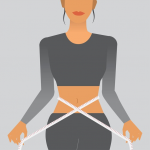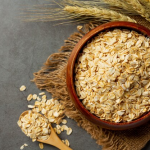What is diabetes?
Diabetes is a disease caused by problems with the hormone insulin. Normally, the pancreas (an organ at the back of the stomach) secretes insulin to help the body store and use the sugar and fat from the food eaten. Diabetes is caused by the following complications:
- When the pancreas does not produce insulin
- When the pancreas produces too little insulin
- When the body does not react appropriately to insulin, this is called “insulin resistance”
Diabetes is a lifelong disease and in the last 20 years, the number of adults diagnosed with diabetes has doubled. There is no cure yet, but people with diabetes can live a long and healthy life by managing their lives according to the disease.
The cells of people with diabetes are resistant to insulin, which leads to high levels of sugar circulating in the blood, called high blood sugar. By definition, a person with diabetes has a blood glucose level of 126 milligrams per deciliter (mg/dL) or more.
Types of Diabetes
Type 1 Diabetes
Type 1 diabetes occurs when the insulin-producing cells of the pancreas (beta cells) are destroyed by the immune system. People with type 1 diabetes do not produce insulin and use insulin injections to control their blood sugar. Type 1 diabetes usually occurs in people under the age of 20 but can occur at any age.
Type 2 Diabetes
Unlike people with type 1 diabetes, people with type 2 diabetes produce insulin. However, insulin production is not enough or the body is resistant to insulin. When not enough insulin is produced or cannot be used properly, glucose cannot enter the body’s cells. Type 2 diabetes is the most common form of diabetes. Most cases are preventable, but it remains the leading cause of diabetes-related complications for adults, including blindness, non-traumatic amputations and chronic kidney failure requiring dialysis. Type 2 diabetes usually occurs in people over 40 and overweight, but it can also occur in people who are not overweight. Type 2 diabetes, sometimes called “adult-onset diabetes”, is becoming more common in children because of the increase in obesity in young people.
It is possible to control type 2 diabetes by losing or gaining weight and exercising regularly. Pills that help the body to use insulin better can also be used.
Hidden Sugar (Pre-Diabetes)
In hidden diabetes, blood sugar levels are higher than normal, but not yet high enough to be diagnosed as type 2 diabetes. Pre-diabetes, like type 2 diabetes, increases the risk of heart disease and stroke. People who are overweight, have a family history of diabetes, had gestational diabetes during pregnancy and do not engage in physical activity at least three times a week are at risk. One in three people in Turkey is thought to have hidden diabetes, but the good news is that your hidden diabetes can be controlled with a lifestyle change program approved by your doctor and you may have a chance to reverse the condition.
Gestational diabetes
Gestational diabetes is triggered by pregnancy. Hormone changes during pregnancy can affect the proper functioning of insulin. Gestational diabetes occurs in about 4% of all pregnancies. In general, women at high risk of developing gestational diabetes are women over the age of 25, women with a body weight above normal before pregnancy, women with a family history of diabetes or women of Hispanic, black, American and Asian descent.
Screening for gestational diabetes should be done. Untreated gestational diabetes increases the risk of complications for both the mother and her unborn child. Usually blood glucose levels return to normal within six weeks after delivery. However, women with gestational diabetes are at risk of developing type 2 diabetes later in life.
What are the Symptoms of Diabetes?
Symptoms oftype 1 diabetes often appear suddenly and can be severe:
- Dehydration
- Hunger
- Dry mouth
- Frequent urination
- Unexplained weight loss
- Fatigue
- Blurred vision
- Respiratory problems
- Loss of consciousness (rare)
The symptoms of type 2 diabetes can be the same as above. Most of the time, no symptoms are observed. Other symptoms include:
- Slow healing wounds and cuts
- Itchy skin (usually skin in the groin and vaginal area)
- Frequently recurring fungal infections
- Excessive weight gain
- Numbness or tingling in the hands and feet
- Sexual reluctance, erectile dysfunction
Diabetes Diagnosis
To diagnose diabetes, you start with one of the following three tests. In most cases, the doctor may repeat the tests to confirm the diagnosis:
- Fasting blood glucose: A test that measures blood glucose levels in blood taken in the morning before a meal. A level of 126 mg/dL or higher may mean you have diabetes.
- Oral glucose tolerance test (OGTT): Requires drinking a glucose-containing beverage and then checking blood glucose levels every 30 to 60 minutes for up to 3 hours. If the glucose level rises to 200 mg/dL or higher in 2 hours, you may have diabetes.
- A1c test: It is a simple blood test that shows the average blood glucose level over the past 2 to 3 months. An A1c level of 6.5% or higher may mean you have diabetes.
How is Diabetes Managed?
There is no definitive cure for diabetes today, but diabetes can be managed and controlled. During diabetes treatment:
- Keeping blood sugar levels as close to normal as possible by balancing food and drink intake,
- Reducing saturated fat and cholesterol by avoiding processed sugar and maintaining blood cholesterol and triglyceride (lipid) levels within normal ranges,
- It is important to have your blood pressure checked regularly. Blood pressure should not exceed 130/80.
Managing diabetes is not difficult and improves your quality of life. By following the steps below, you can create a plan for yourself and protect yourself from the complications of the disease:
- Make a regular meal plan.
- Learn about diabetes and make sure you have the support of your loved ones.
- Exercise regularly.
- Be prepared for emergencies.
- Take your prescribed medicines according to the instructions.
- Monitor blood sugar and blood pressure levels at home.
- Keep your appointments.









